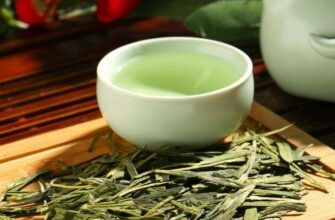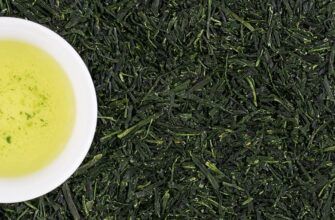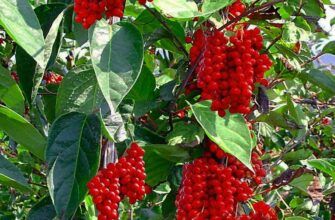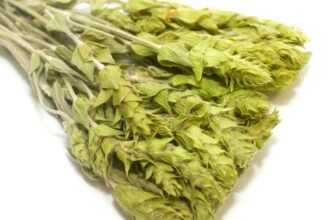Matcha (Tencha) is a green tea that traditionally grows in the same low light conditions as Gyokuro and is part of the traditional Japanese channa ceremony. Nowadays, it is also used to make non-traditional drinks such as matcha latte and others.
This tea is highly valued for all the health benefits of green tea, as well as being high in antioxidants. Traditionally, rice cloth is stretched over the plantations on bamboo sheds, blocking out about 90% of sunlight for 3 weeks before harvest.
After the tea leaves are collected, they are already considered matcha, although the further manufacturing process is no different from the preparation of ordinary green tea, although they are not dried in the usual way, but are passed through a pipe where they are exposed to air. As a result, the inner part of the leaf skeleton is destroyed, and a product called tencha is obtained.
Types of matcha tea
It is important to know that matcha comes in many varieties, from regular varieties used for food to premium varieties used during ceremonies and everything in between. Some varieties are very cheap, some can be insanely expensive. However, matcha can be divided into two categories - the usual "thin" type, which is also called "usucha", and the lesser-known "fat" type, which is called koicha. Here are the differences between them to be aware of:
Thin (Usucha): This is a regular matcha. It's actually not that thin, but from a really thinner "fat" matcha. You may think that this tea has a weaker taste and aroma, but it is quite the opposite - this tea has a juicier taste and aroma than koicha.
Thick (Koicha): This tea grows on older trees that are at least 30 years old. It doesn't have such a strong taste. Therefore, this tea can be used twice as much without fear of getting a bitter tint. Koicha is always more expensive than usucha.
How to cook
- Heat the brewing vessel with hot water for a few minutes, then dry the vessel completely.
- Using a special bamboo teaspoon, add half to three-quarters of the tea (you should use twice as much koicha). You can also sift the tea to get a more uniform mass. If you are using a regular spoon and not a Japanese bamboo spoon, add just one quarter.
- Add milk to half a cup of hot water at about 80 degrees. This is less than the temperature at which water boils.
- Wet your whisk. Slowly stir with a whisk for 1-2 minutes, as if drawing the letter "W" on the surface, until the broth turns green.






